The home and furnishing trends that we will see in 2024, including new phenomena, continuations of trends already seen in recent years and cyclical re-propositions revised in a modern key.
- Brown tones used as neutral shades
- Walls painted with limewash effect
- The colour palette draws on the 2024
- Asymmetries
- Curved lines
- Dividers
- Modular and multi-purpose furniture
- Desks and furniture that conceal cables
- Kitchens with natural wood accent elements among this year’s home trends
- Kitchens with cafeteria atmospheres
- La “butler’s pantry”
- Natural wood bathroom furniture
- Increasingly large (and spectacular) showers
- Herringbone patterns
- Marbles with high-contrast veining
- Different textures
- Pattern folk
- Handcrafted and handmade elements
- Sustainability, recycling, circular design
- Terraria
Brown tones used as neutral shades
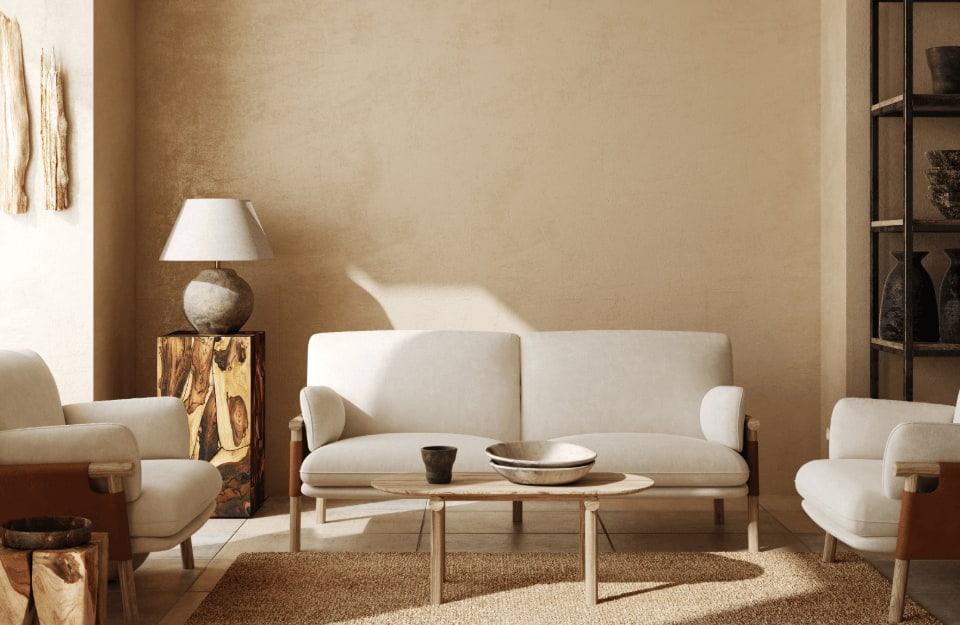
Not only whites and shades of grey: this year the palette of browns (clear, but not limited to) used as neutral tint on the walls, in the name of warm colours and cosy atmospheres.
Beige, greige and hazelnut will be among the most successful shades; By the way, hazelnut is part of the material paint colour range Vintage Prestige by Rio Verde, which can be used on many materials, including walls (but only for small areas because it is not a wall paint).
Walls painted with limewash effect
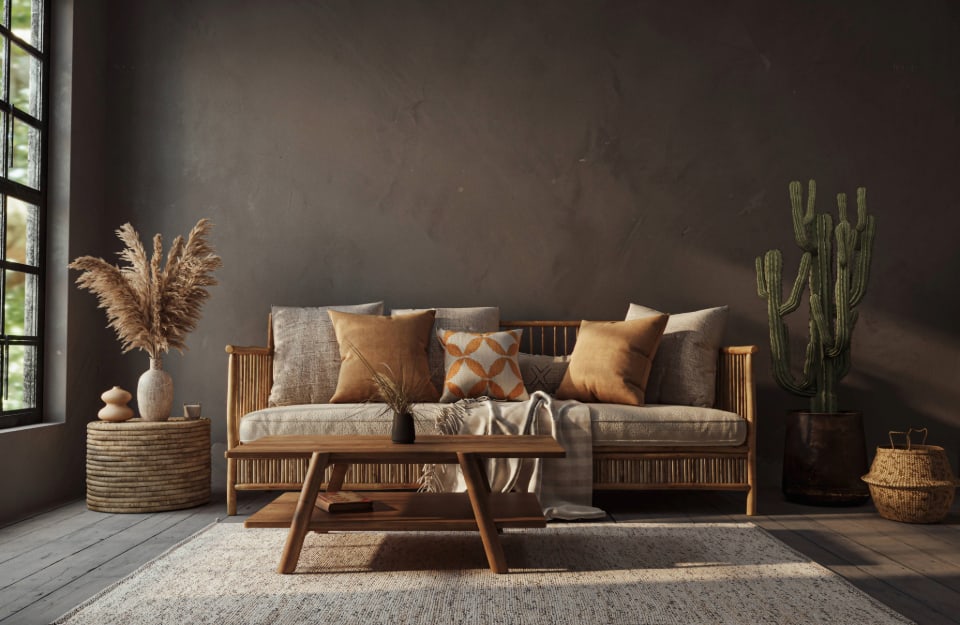
The so-called limewash is nothing other than painting with lime products. Very breathable, it allows the creation of glazes that give a very dynamic and natural effect. Similar paints have been used for centuries but have come back into fashion – in a contemporary version, of course – in recent times.
The colour palette draws on the 2024
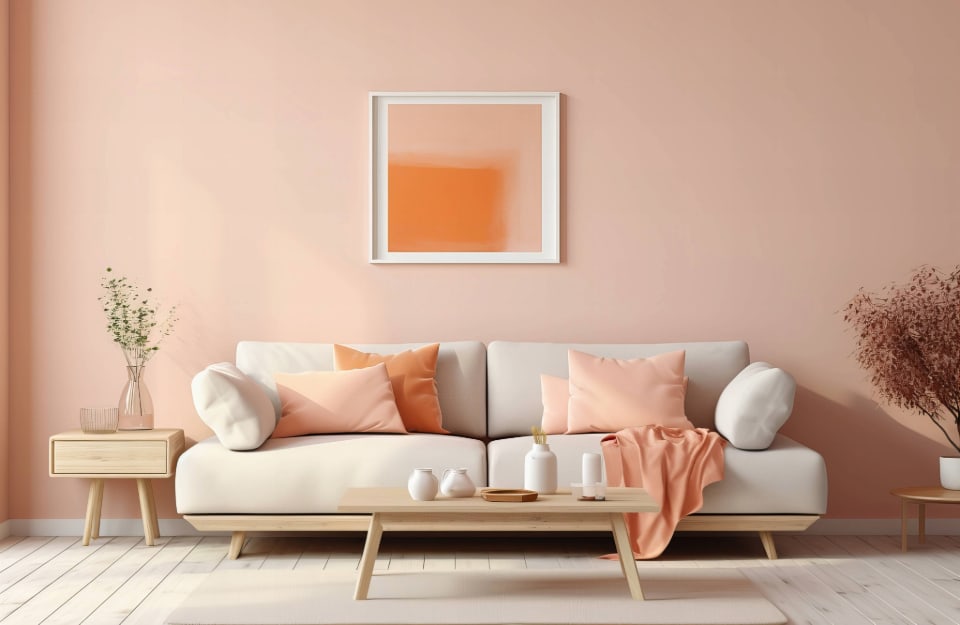
There is the color of the year decreed by Pantone, the Peach Fuzz, although peach tones had already been seen at major design and furniture fairs.
Cosy, cool and warm at the same time, the fish, in all its nuances, is making its way into interior design, on furniture, accessories, walls and fabrics.
Asymmetries
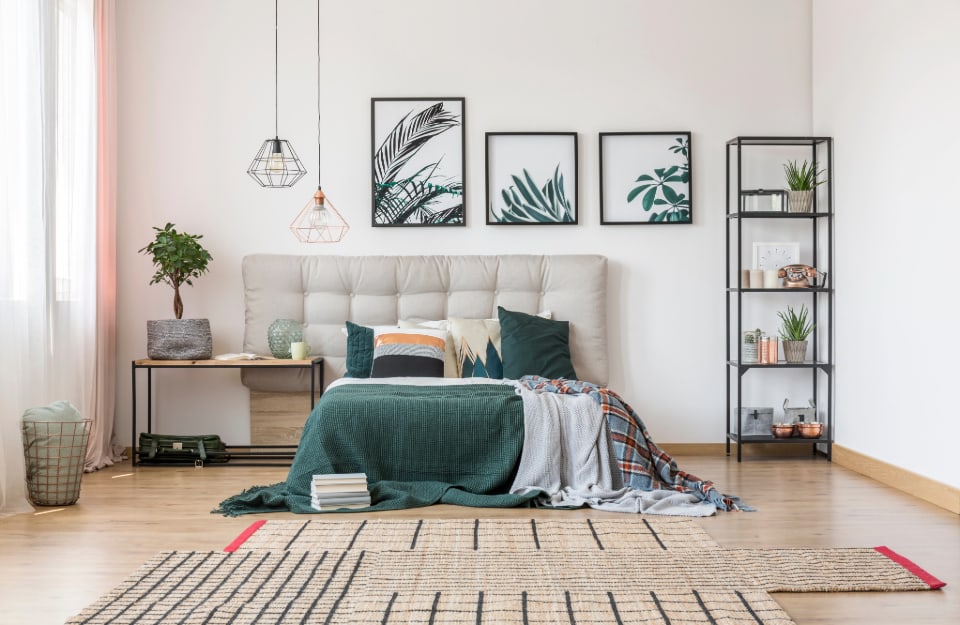
In defiance of Instagram and the “wesandersonian” obsession with symmetries, there will be room for non-symmetrical perspectives: chandeliers offset from the centre, “crooked” compositions, walls with colours or woodwork starting in the “wrong” place, for a touch of originality.
Curved lines
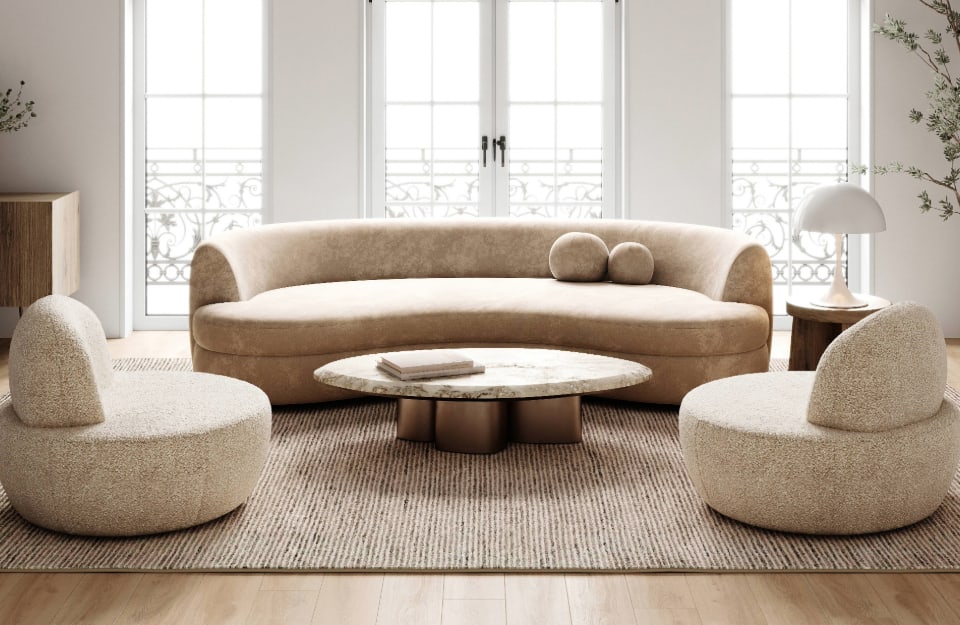
After years of boxy minimalism, the curved lines have made a strong comeback in contemporary furniture: lamps, of course, but also armchairs, sofas, tables, coffee tables, consoles, arches, woodwork. They lend themselves to use both in essential rooms and in rooms characterised by richer styles. There is also a subtrend, that of the so-called chubby design, characterised by “chubby” furniture shapes.
Dividers
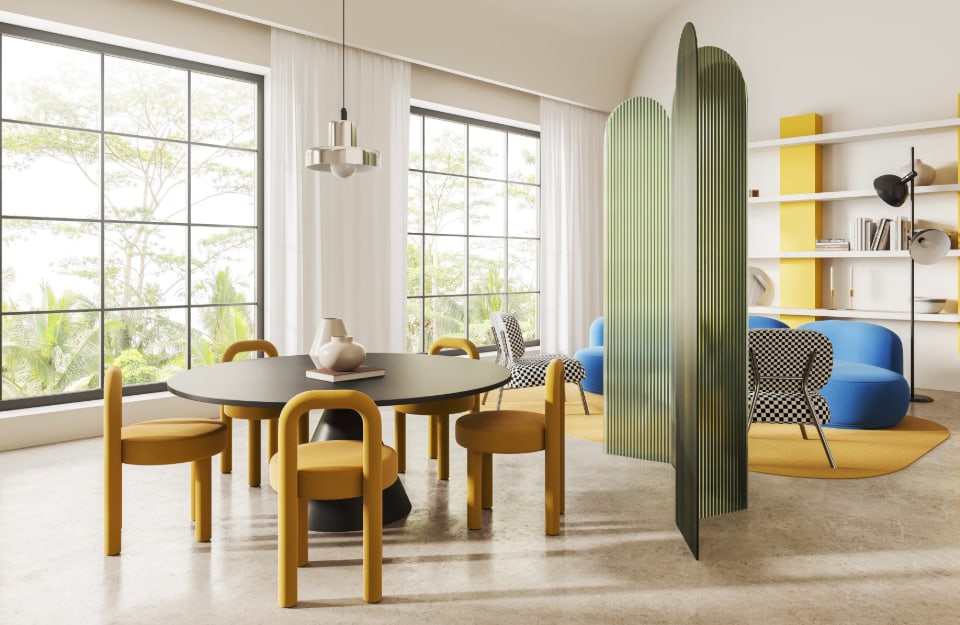
In rooms becoming multifunctional (with working from home now widespread) and flats becoming smaller and smaller, visually dividing rooms, but flexibly, has become a necessity. So make way for partitions, screens, panels and – for those who love the oriental style – Byōbu.
Modular and multi-purpose furniture
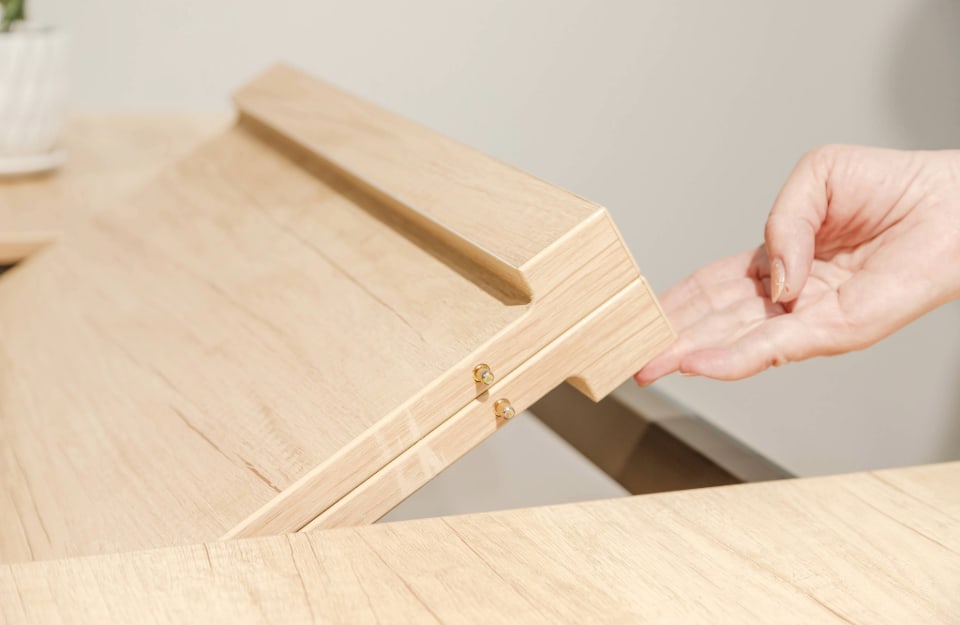
Increasingly, homes are “doubling up” as workspaces: offices, workshops, small ateliers, home restaurants… Transformable and modular furniture allows the layout of a room to be changed relatively quickly. We are talking about tables that become desks, foldaway cupboards, shelves that can be put together and taken apart at will, sofas with integrated storage units and much more;
Desks and furniture that conceal cables

With the constant spread of smart working and thus of the so-called ‘home office’, it is not necessarily necessary to sacrifice the aesthetics of a domestic room with intricate hanks of wires for one’s devices. Thanks to design tricks or more or less technological solutions, contemporary furnishings are often conceived to reduce or hide cables altogether.
Kitchens with natural wood accent elements among this year’s home trends
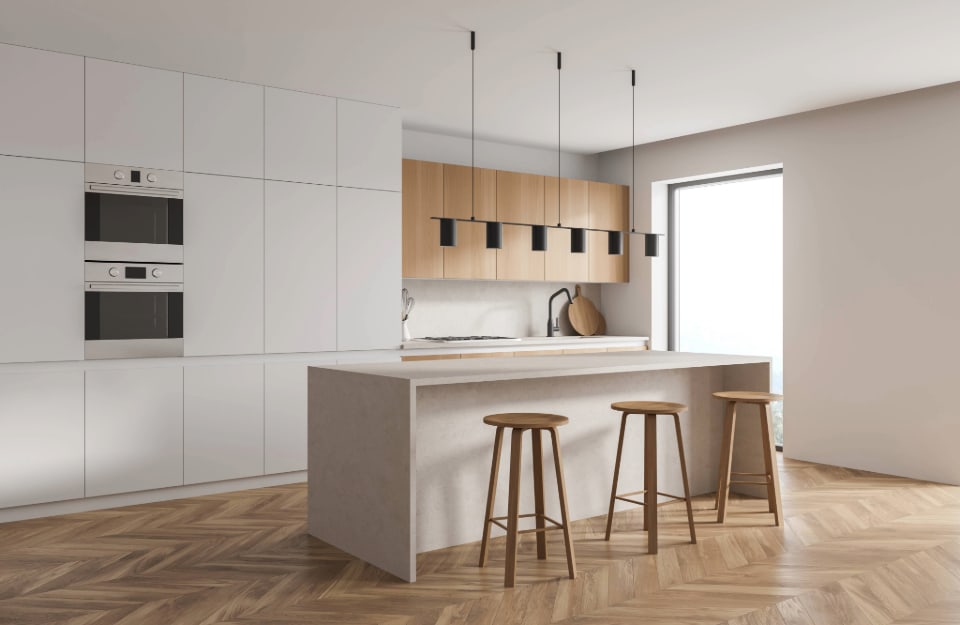
Although far from disappearing, we will see fewer and fewer single-colour kitchens. In addition to the two-tone trend, which we have already discussed, another is coming to light: the use of the natural wood as accent colour/element, declined especially on wall units, islands and peninsulas.
Kitchens with cafeteria atmospheres
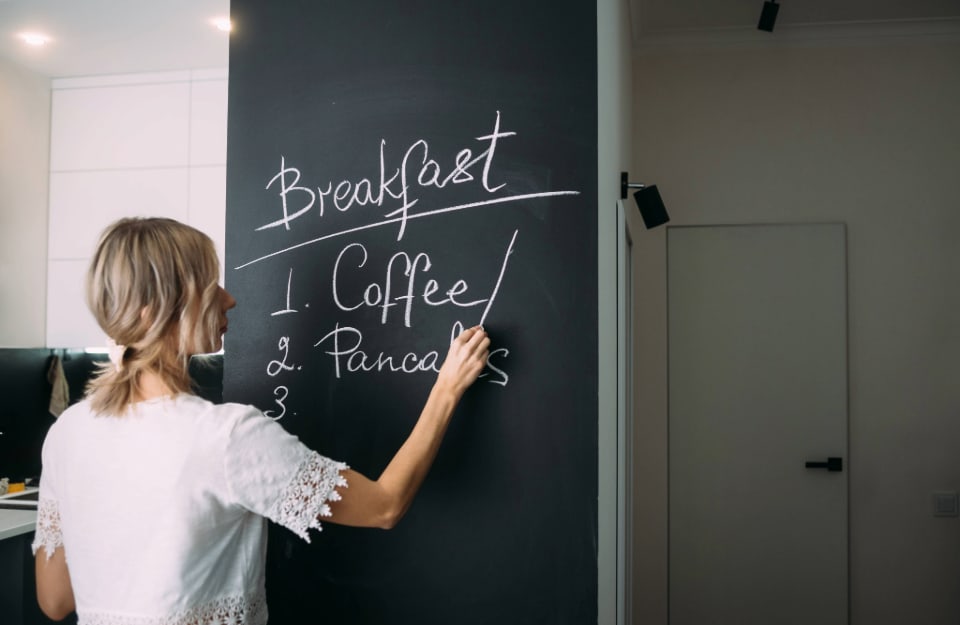
The now ubiquitous Anglo-Saxon/Northern European style kitchens are also arriving in homes, or at least the atmospheres that characterise them. It is mainly young people who set up kitchens resembling coffee bars, with blackboards, walls painted with chalkboard effect paints, large LED bulbs with warm lights, stools, large espresso machines or utensils for more exotic ways of preparing coffee;
The “butler’s pantry”
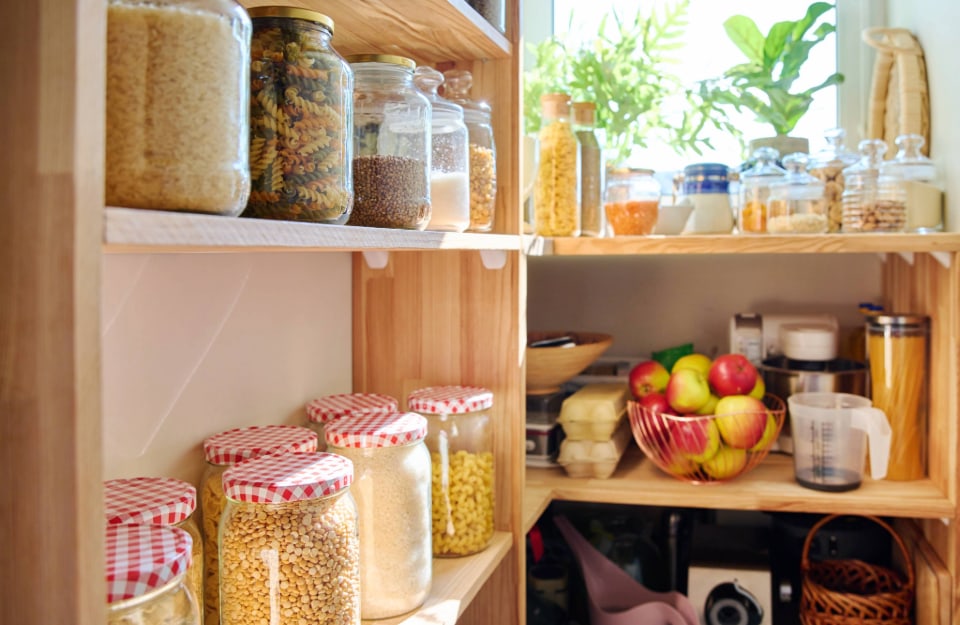
Literally “butler’s pantry“, is widespread in the Anglo-Saxon world. It is a small service room, usually near the kitchen or dining room of large houses, where ‘good’ crockery and cutlery are stored, where food (pasta, flour, sugar, canned goods, preserves) is kept, and where outgoing dishes can be placed at formal dinners. Historically, they were servants’ rooms, where the butler kept the silverware under lock and key. Today, power utensils (to reduce kitchen clutter), small fridges and even sinks and dishwashers are also kept there;
Natural wood bathroom furniture
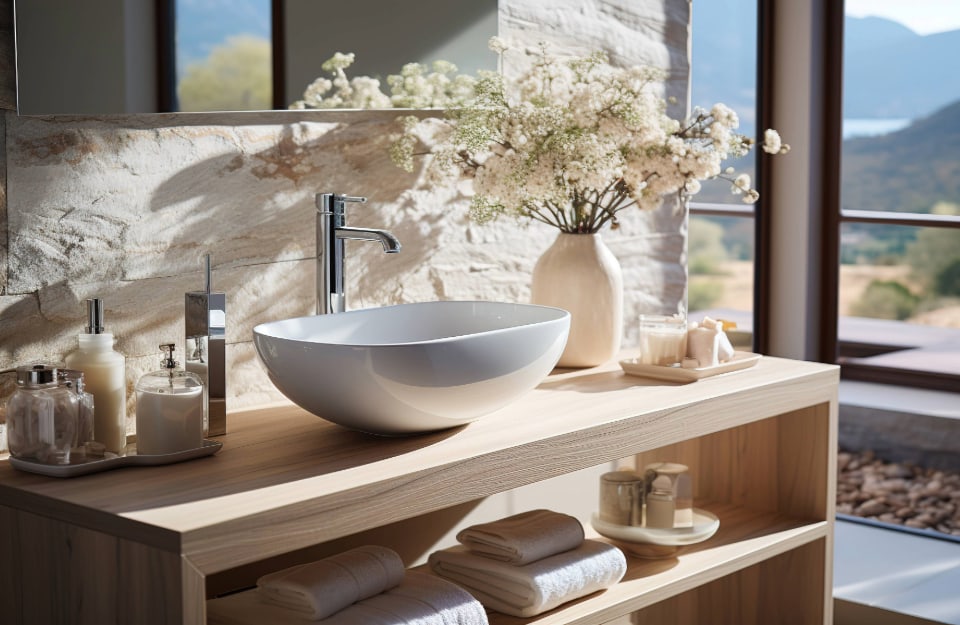
For some time now, natural wood bathroom furniture has started to supplant white and lacquered ones. The trend is likely to continue for a few more years;
Increasingly large (and spectacular) showers
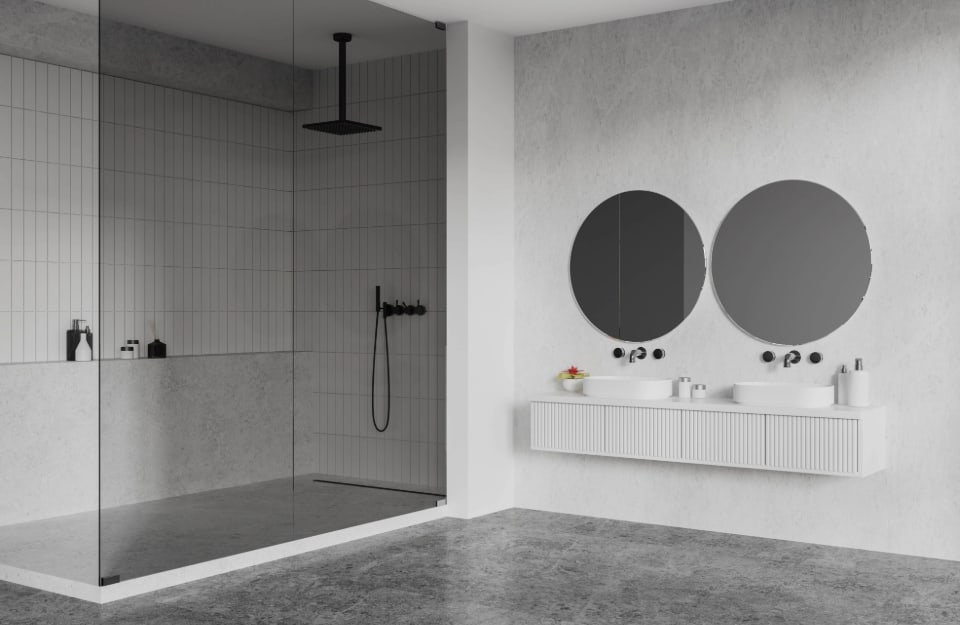
After the pandemic, the demand for houses with large bathrooms, so you can afford the luxury of retreating – when you need some relaxation – to your own personal spa. Even where there is no space for saunas and whirlpool baths, there is an attempt to enlarge the shower area as much as possible, focusing on details: from materials to technologies;
Herringbone patterns
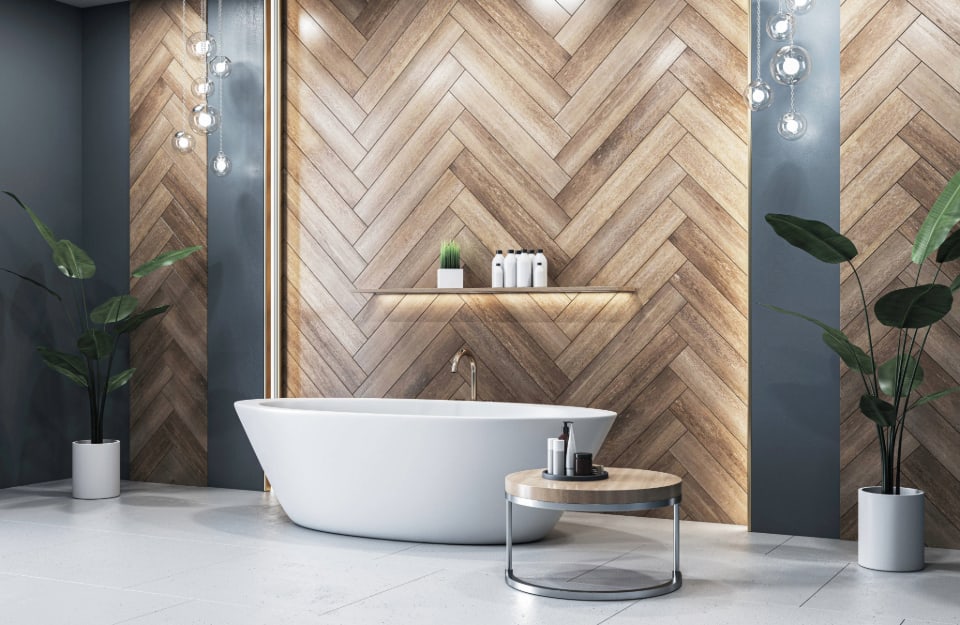
The fishbone is a great parquet classic, but in this case we are not only talking about floors but also about tiled walls, woodwork, furniture and fabrics (carpets, curtains, blankets, cushions). Rooms furnished with herringbone elements are increasingly found in catalogues, magazines and on social media;
Marbles with high-contrast veining
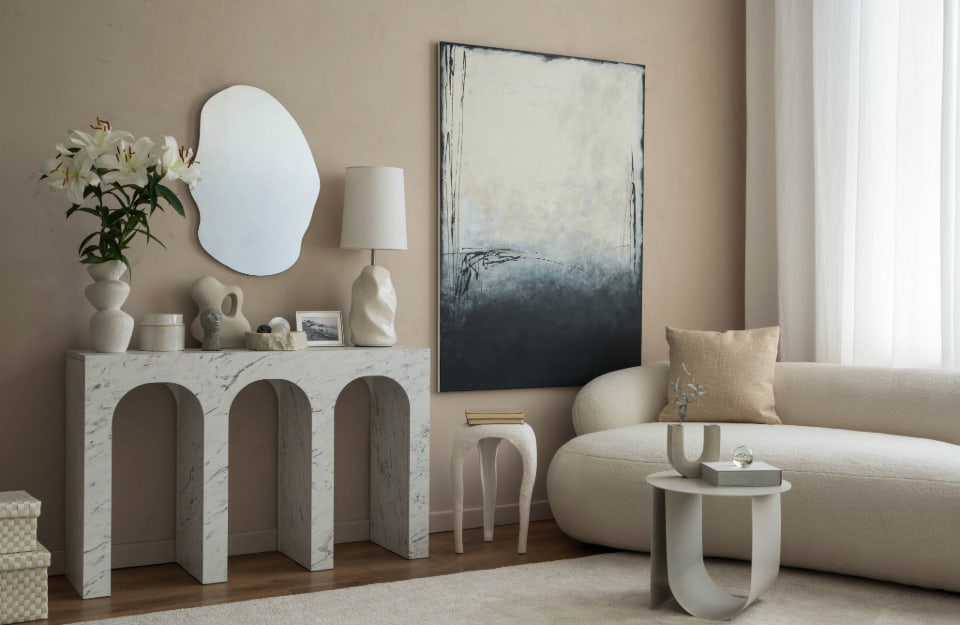
For years now, marble has been one of the most popular materials. We will continue to see it, especially declined in furnishing or decorative pieces, characterised by large, high-contrast veins and essential, predominantly neoclassical lines (golden proportions, arches, modularity);
Different textures
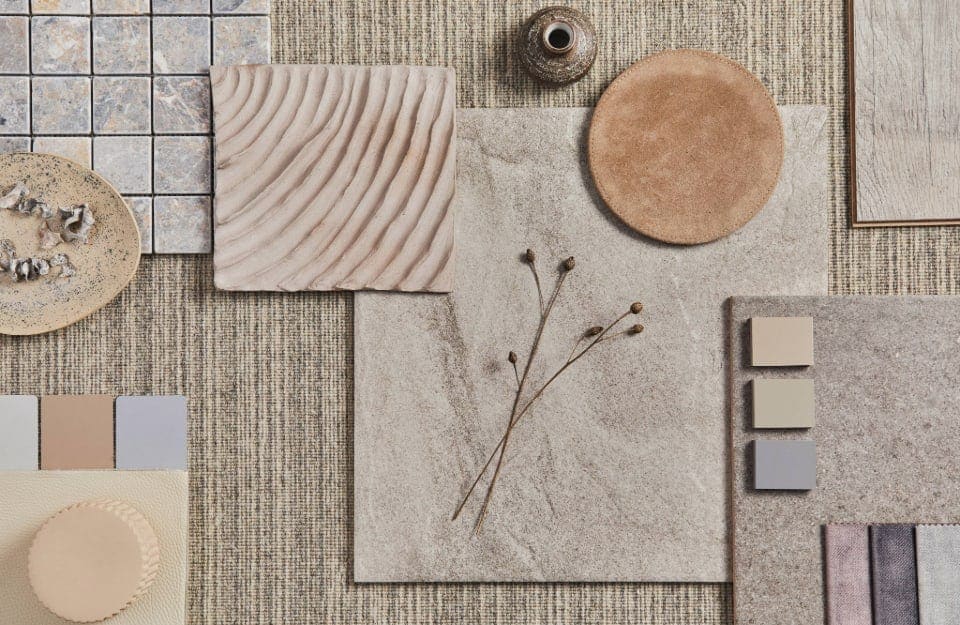
In an increasingly digital world, the need to stimulate and emphasise the tactile aspect of materials is more than natural. Every room then becomes a potential museum of consistencies and textures: soft, rough, woolly, rough, glossy, matte, spongy, woody, metallic… You can of course play with materials but also range between paints and their effects. With the Vintage Prestige from Rio Verde you can get many textural effects, from pickled to patinated.
As for the metallic effect, Golden Prestige can be used on a variety of materials, not just wood;
Pattern folk
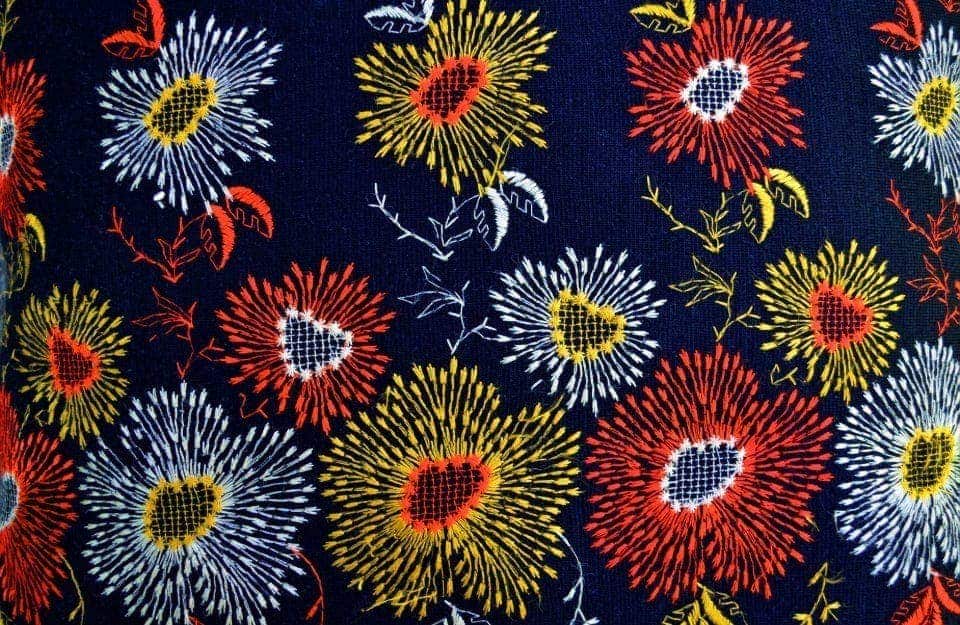
The folklore and traditional arts of the countless cultures that populate our planet are an enormous heritage and an inexhaustible reservoir of decorative elements and inspiration. In the search for authenticity, the folkpatterns are all the rage. They range from local to the most exotic. On the crest of the wave at the moment are floral patterns: from Scandinavia to Mexico via Eastern Europe;
Handcrafted and handmade elements
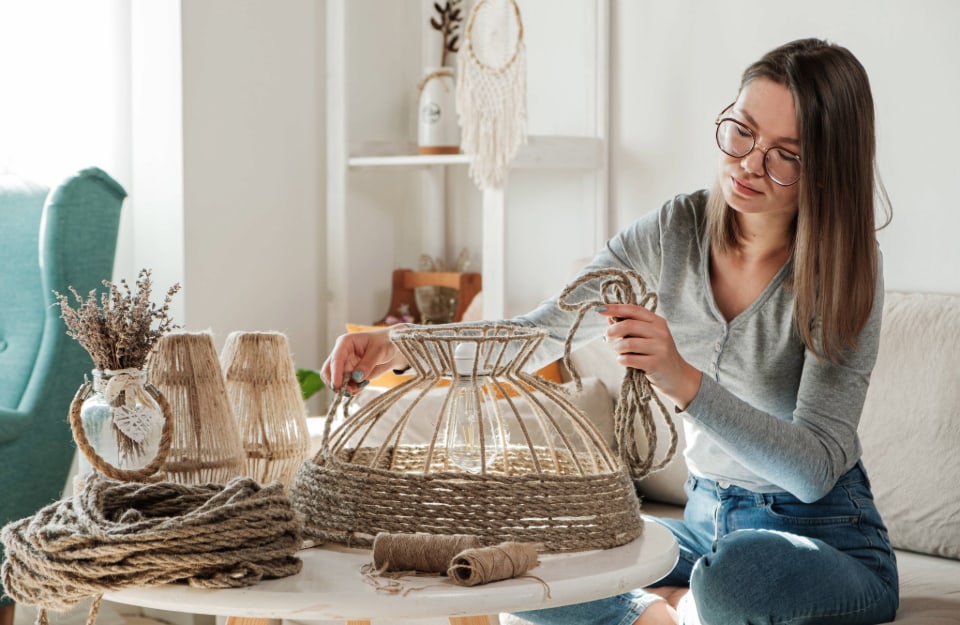
Lamps, ornaments, carpets, tables, but also tiles. That of craft and the handmade is a trend that we find more and more present, also due to the increased focus on sustainability, slow work rhythms, and the uniqueness of non-industrial products. The phenomenon is also linked to responsible consumption: better little, but well made, and better still if signed by independent artists or designers, to be supported through the purchase of what they produce;
Sustainability, recycling, circular design
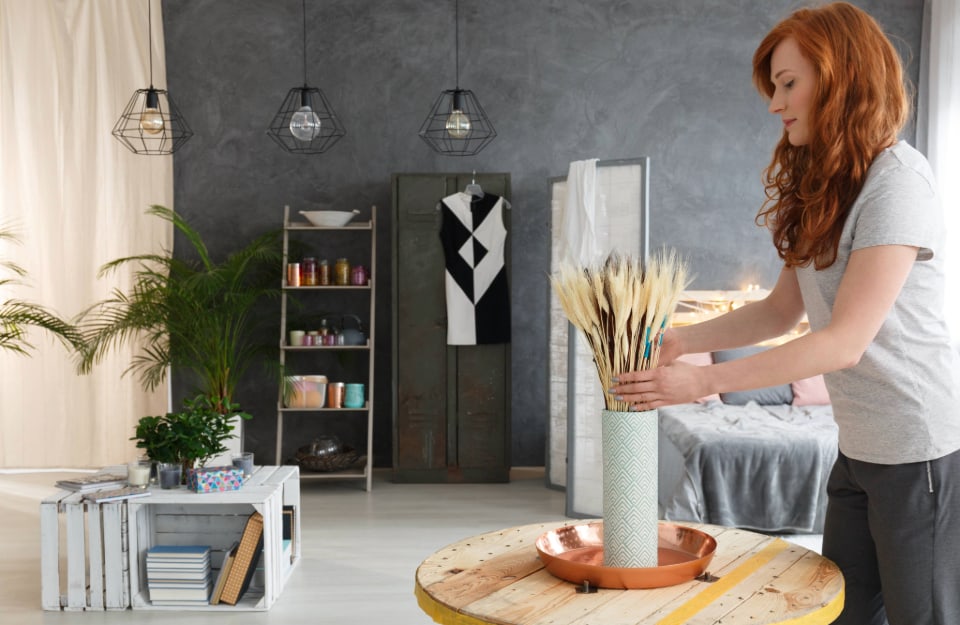
In the same vein as the previous point is the need to focus on as much environmental sustainability as possible. Thus: green materials, products built with recycled raw materials, pieces of second-hand renovated with little expense (here the entire Rio Verde range will be indispensable to achieve excellent results, from restoration to decoration). One of the most recent phenomena is the so-called stooping, i.e., the retrieval of abandoned furnishings and furniture on roadsides and pavements. Something that has always been done, but is now a real trend, with dedicated Instagram pages.
Terraria
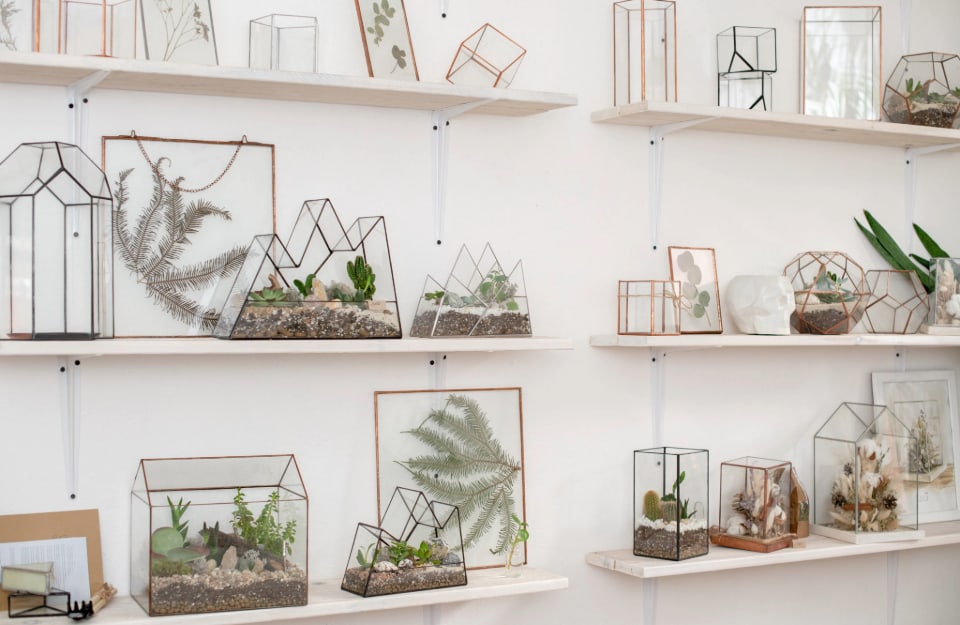
Cornerstones of the urban jungle style, terraria can work with any style of décor – there are minimalist, baroque, modernist..;
Much-loved by the younger generation, they are an effective and relatively inexpensive way to bring a little piece of nature into the home, in most cases needing no care, and are sure to make an impression ‘scenically’;


